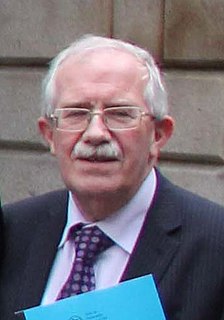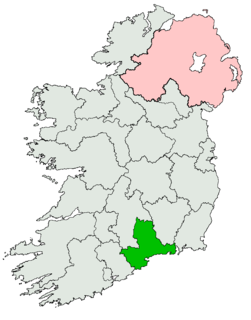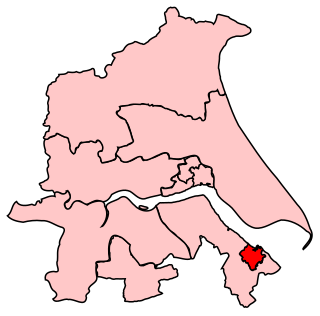The Tipperary by-election of March 1875 took place on 11 March 1875. The by-election, to one of two seats in the House of Commons constituency of Tipperary, arose due to the disqualification of the recently elected member, John Mitchel, who had won an uncontested by-election the previous month.

The House of Commons is the lower house of the Parliament of the United Kingdom. Like the upper house, the House of Lords, it meets in the Palace of Westminster. Officially, the full name of the house is the Honourable the Commons of the United Kingdom of Great Britain and Northern Ireland in Parliament assembled. Owing to shortage of space, its office accommodation extends into Portcullis House.
Tipperary, also known as Tipperary County, was a parliamentary constituency in Ireland, which from 1801 to 1885 returned two Members of Parliament (MPs) to the House of Commons of the United Kingdom.

John Mitchel was an Irish nationalist activist, author, and political journalist. Born in Camnish, near Dungiven, County Londonderry and reared in Newry, he became a leading member of both Young Ireland and the Irish Confederation. He was transported to Van Diemens Land but later escaped to the United States in the 1850s, he became a pro-slavery editorial voice. Mitchel supported the Confederate States of America during the American Civil War, and two of his sons died fighting for the Confederate cause. He was elected to the House of Commons of the United Kingdom in 1875 but was disqualified because he was a convicted felon. His Jail Journal is one of Irish nationalism's most famous texts.
At a meeting of the Mitchell Committee on 21 February in the Hibernian Hotel Tipperary, it was resolved that "no honourable course was open to the constituency but to re-nominate John Mitchel as the candidate of the people's choice". [1] Mitchel made it clear that, if he was elected, he had no intention of going to Parliament. [2] Although it was widely expected that no other candidate would be nominated, at the last moment, a Conservative, Captain Stephen Moore, put himself forward. It was expected that he would be defeated in the vote, but since Mitchel was bound to be disqualified again it was anticipated that Moore would then be awarded the seat by default. [3] As expected, Mitchel won a comfortable majority. [4] His majority was over 2,300, with around 500 spoilt votes. [5]
Stephen Moore (1836–1897), was an Irish Conservative politician in the Parliament of the United Kingdom of Great Britain and Ireland.
Having complained of ill-health during the campaign, Mitchel died unexpectedly on 20 March 1875. [6] As expected, the courts subsequently invalidated his election and awarded the seat to Moore, who remained as MP until the next election, in 1880, when he retired. [7]
| Party | Candidate | Votes | % | ± | |
|---|---|---|---|---|---|
| Independent Nationalist | John Mitchel | 3,114 | 80.7 | N/A | |
| Conservative | Stephen Moore | 746 | 19.3 | N/A | |
| Majority | 2,368 | 61.3 | N/A | ||
| Turnout | 3,860 | 37.4 | N/A | ||
| Registered electors | 10,315 | ||||
| Conservative gain from Independent Nationalist | |||||







